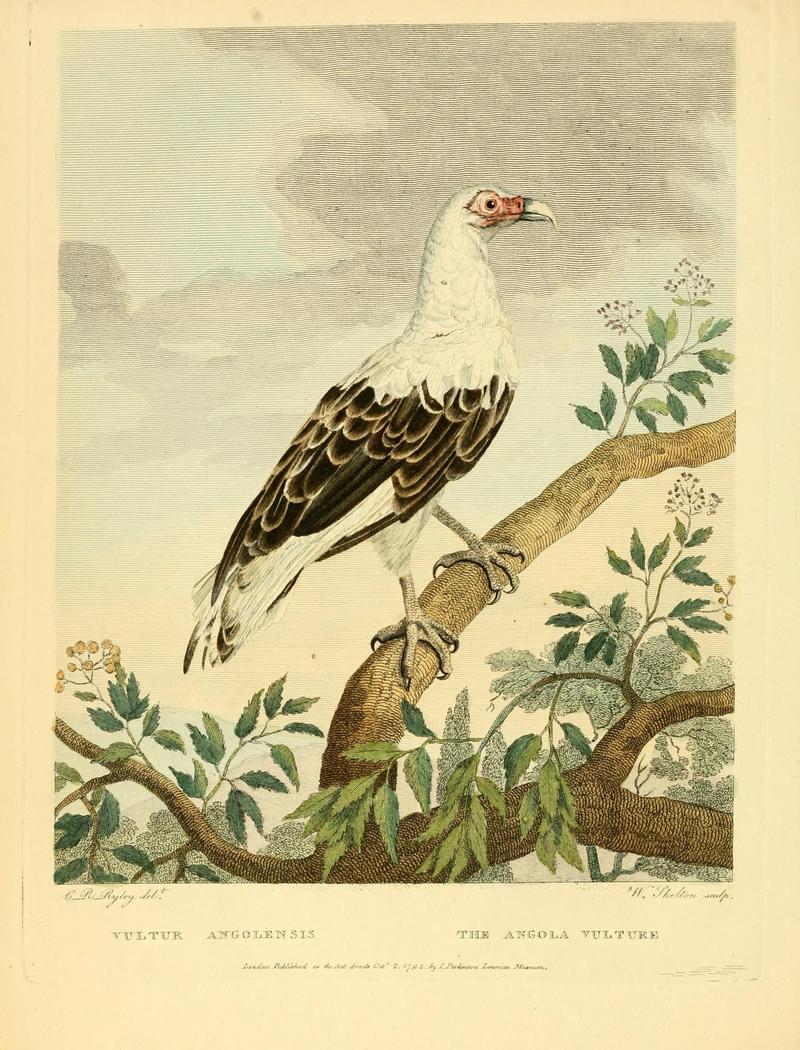|
| Query: bird | Result: 4247th of 32675 | |
palm-nut vulture, vulturine fish eagle (Gypohierax angolensis)
| Subject: | palm-nut vulture, vulturine fish eagle (Gypohierax angolensis)
| | Poster: | Wiki Photos (---@---.---)
| |

| Resolution: 2354x3090
File Size: 1181920 Bytes
Upload Date: 2017:03:10 01:02:13
|
Description Gypohierax angolensis syn. Vultur angolensis
Musei Leveriani explicatio, anglica et latina / opera et studio Georgii Shaw ... ; adduntur figuræ, eleganter sculptæ et coloratæ.
Date 1792
Source http://www.biodiversitylibrary.org/pageimage/29568566
Author Sydenham Edwards; Philip Reinagle; Charles Reuben Ryley; George Shaw; William Skelton; Sarah Stone
Source: https://commons.wikimedia.org/wiki/File:Musei_Leveriani_explicatio,_anglica_et_latina_BHL29568566.jpg
The palm-nut vulture (Gypohierax angolensis) or vulturine fish eagle, is a large bird of prey in the family Accipitridae. It is the only member of the genus Gypohierax. Unusual for birds of prey, it feeds mainly on the fruit of the oil palm, though it also feeds on crabs, molluscs, locusts, and fish, and has been known to occasionally attack domestic poultry and bats. |
^o^
Animal Pictures Archive for smart phones
^o^
|
|